#please we need more alpha wolf content on this website
Text
AHEM!

Not nearly enough people on this site are talking about Alpha Wolf. So, if you don't mind, I'd like to give you a little background to help make my case as to why YOU should be listening to Alpha Wolf! (buckle in, gang. this is gonna be a little long)
For my fellow Sleep Token fans, you've likely seen these photos, right?


Vessel was photographed in an Alpha Wolf hoodie a while ago, and then Alpha Wolf dressed as Sleep Token for Halloween last year!


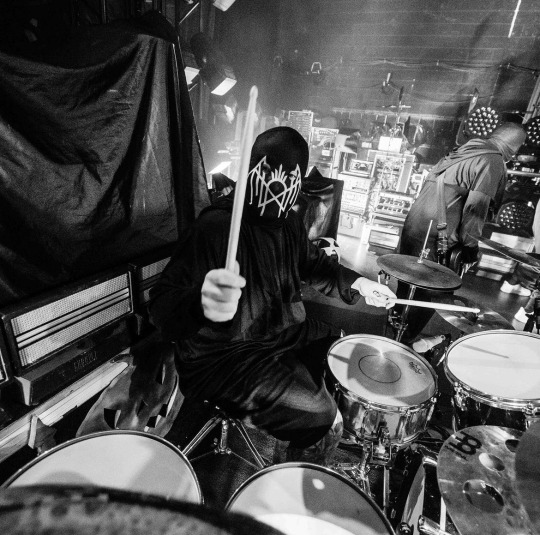
but you should really check out the full video on their youtube!
But who are those guys?

Alpha Wolf is an Australian metalcore band comprised of five members! They've toured with the likes of The Amity Affliction, Motionless in White, and Polaris. They have three full length studio albums Mono (2017) (quick side note that they DID have a different lead vocalist for this album), A Quiet Place to Die (2020), and newly released Half Living Things (2024). Now, let introduce you to the band real quick.
Lochie Keogh - Lead Vocals


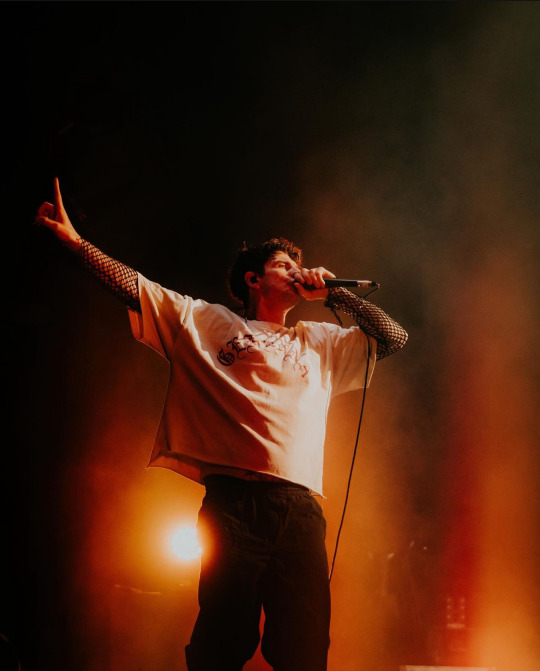
he has some of my favorite aggressive scream vox, his voice can really pack a punch. also my babygirl, my beloved🖤 | instagram
John Arnold - Bass, Backing Vocals


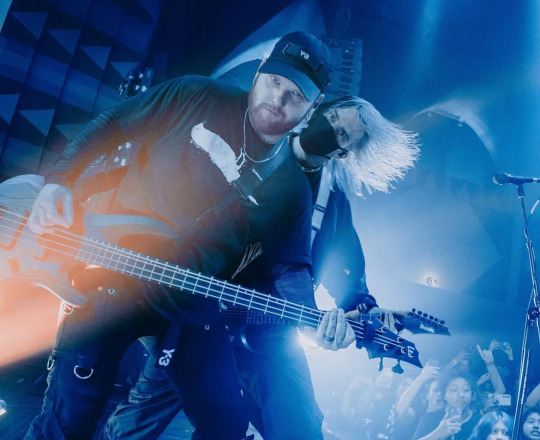
get yourself a man who can do both, we love our resident cool bassist. (they're staring at you intimidatingly to convince you to listen to their music) | instagram
Scottie Simpson - Lead Guitar


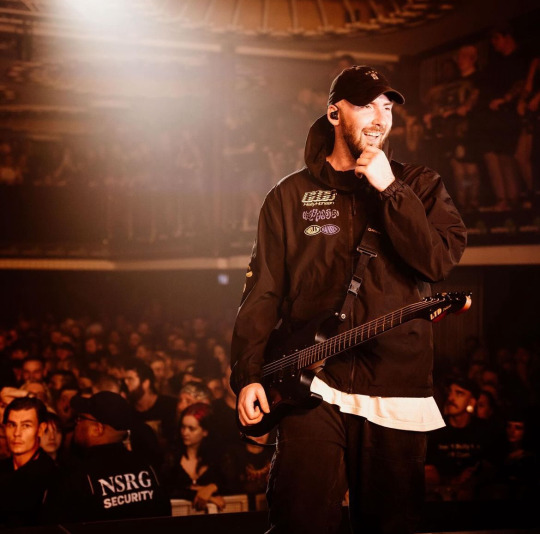
my certified cool guy™ in my book and honestly incredibly photogenic look at that man | instagram
Sabian Lynch - Rhythm Guitar
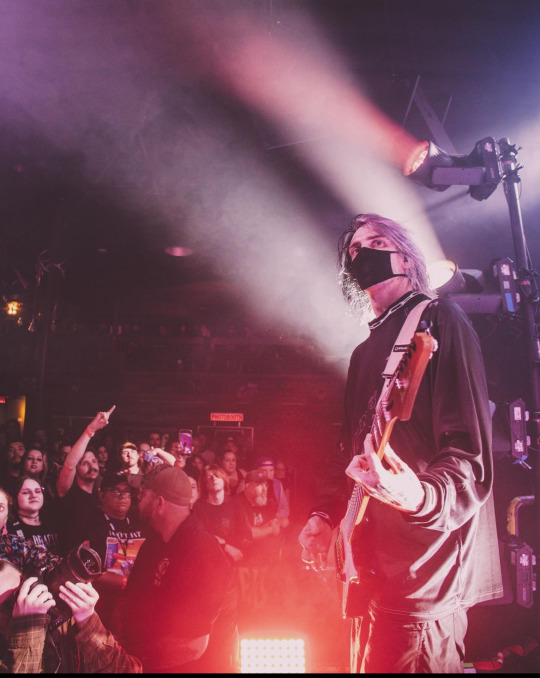


his tour vlogs are so fun to watch!! he's always having a good time, wonderful fun and cool guy | instagram | youtube
Mitch Fogarty - Drums



a sweet happy lovely goofball. man fills my heart with so much joy you don't even know | instagram

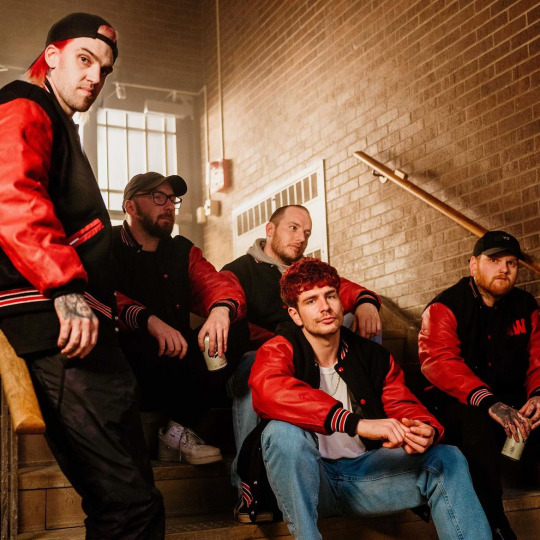

They are always performing with passion & energy. They're one of those bands that you can tell enjoy their concerts, because they're always having a great time on stage. I dare you to scroll through their instagram for five minutes and then try to tell me that they don't look like a fun bunch o' fellas!
Here I present five songs for your consideration.
(thank you to my beloved alpha wolf mutual @simpleapparition for helping me to make this list)
Their most popular track, if you're going to check them out, Akudama is a great place to start. It's their most popular for a reason!
I consider 60cm Of Steel to be another essential Alpha Wolf track. This one is also a collaboration with Holding Absence (another one of my favorite bands, but that's beside the point).
Acid Romance is another song from the same album as Akudama (A Quiet Place to Die). If you're in the market for some angsty lyrics, this bad boy's for you.
For the final two recommendations, I shall present two of our own personal favorites off of their new album, Half Living Things!
Garden of Eyes comes recommended by @simpleapparition
Mangekyō comes recommended by yours truly, @politemagic
Thank you for coming to my Ted Talk
#gang i spent way too much time putting this together for you guys to NOT give them a listen#🌀you wanna listen to alpha wolf soooooo bad🌀#please we need more alpha wolf content on this website#alpha wolf#alpha wolf band#lochie keogh#john arnold#scottie simpson#sabian lynch#mitch fogarty#long post#Spotify
27 notes
·
View notes
Text
All About Karakachan Livestock Guardian Dogs
By Cindy Kolb – The Karakachan livestock guardian dog is an LGD breed that has been used for centuries as an integral part of the life of the nomadic shepherds of Bulgaria, where the breed originated. It is one of Europe’s oldest breeds of dogs, created for guarding its owner’s flocks and property. Syncope Falls—our farm, located in the Appalachian mountains of Southwest Virginia—is proudly preserving the Karakachan breed, also known as the Bulgarian Shepherd dog.
We researched many types of livestock guardian dogs (LGDs) looking to protect our Katahdin sheep and Tennessee Fainting Goats (a.k.a. Myotonics) from coyotes, dogs and other predators roaming our mountains. In the past, we could not successfully raise sheep or goats due to attacks from local dogs—a situation many farmers have experienced. This, along with the growing population of coyotes and black bear in the area and for the safety of our young children, we knew we had to find the right guardian that would meet all of our needs.
From our discussions with goat and sheep owners across the United States, the most enthusiastic LGD success stories were from those who owned Karakachans. These Bulgarian dogs are rare in the U.S., having only been imported as LGDs in the past 10 years. Because of this, it was very difficult to find unrelated dogs in the U.S.
Given the excellent guardian work of our first Karakachan, and our desire to help preserve this breed, we’ve gone to Bulgaria three times since 2007 to bring back new blood lines. They really are the best farm dogs for protecting livestock.
Ready to Start Raising a Pig for Meat?
Learn how to raise pigs in this FREE Special Report, Raising Pigs for Meat: Everything You Need to Know About Pig Farming for Beginners, from Natural Pig Farming to What Can Pigs Eat. YES! I want this Free Report »
We no longer have problems with roaming dogs and coyotes. We can hear the coyotes calling from the fields at night, but once the dogs bark in return, the calls of the coyotes fade away. It has been our experience that these dogs only bark when a threat is perceived. Otherwise, they are content to be silent and blend in with the herd.
Karakachans are more than guardians. For example, we have a male named Volo, born of our first Karakachan female and an unrelated male we imported from Bulgaria. Volo corrals his sheep every night, on his own accord, keeping them in a secure bunch. Not even a crow or ground hog (much less a stray dog) is allowed in any part of the pasture where he is on guard. Our Karakachans also call our attention to other flock problems: For example, when livestock gets caught in a fence. One time they alerted us when a goat fainted and fell down, jamming his horn into the ground, unable to break free. Such an alert can consist of a series of barks mixed with howls. Last fall our first Karakachan, Sasha, located a young goat that had just given birth. Sasha stayed with the doe and her kid for the entire day, assisting in the clean-up process.
Each of our five Karakachan LGDs is very diverse, varying not only in color and size but in their working abilities.
Pirin, our “alpha” male imported from Bulgaria, is usually in charge of our goat bucks, ranging in the fields where the coyotes are heard the most.
Bulgaria’s mountains: Tough terrain where Karakachan dogs have guarded sheep for millennia.
Rado, our youngest male, sets a routine for his livestock. He takes them out in the fields every morning, and brings them back around noon, ranging them out again in the afternoon to a different part of the pasture, bringing them closer in toward the evening.
Duda, a female we imported from Bulgaria, is shy around strangers, but very affectionate with the goats she guards. She has been found combing the long-hair of Grass Dancer (a myotonic buck), and even holding a sapling down with her paws for her goats to eat the choice leaves.
Karakachan dogs are either white with dark spots, or dark colored with white markings, white being a standard marking of these dogs. Average height and weight for males: 26-30 inches (65-75 cm.) and 99-135 lbs. Females: Height, 25-28 inches (63-72 cm.); weight, 88-125 lbs. The head is broad and massive with a short, powerful neck. Coats vary between long haired or short haired with a heavy undercoat. They shed their coats naturally in summer. Their gait is a springy trot, similar to the movement of a wolf.
It’s been our experience that these dogs bond quickly with the animals they are guarding. They’re not known to roam, but do establish a defined territory and won’t leave their fields willingly. When they perceive a threat to its charges, it will chase away the predator but doesn’t abandon the animals in its care. They will also move the flocks away from whatever is perceived as a threat.
When the dogs are with their livestock, they focus on protecting and caring for the animals. Our young children often help us with the goats and sheep, but the dogs are always friendly and very tolerant. Our small herd hands are able to help rotate the livestock to various pastures, trim hooves, and assist in rounding up the stock for the yearly process of checking our animals for CAE, CL, and Johnes disease (which we’re pleased to say we haven’t had a case of to date). If a stranger is near any of our property within sight of the dogs, they bark loudly to alert us, and then move their animals to a different part of the pasture, if they deem it necessary.
A wolf protection collar on a Karakachan dog in Bulgaria. The breed does not hesitate to attack wolves and other predators endangering its sheep.
The Karakachan originated with the ancient Thracians, and was used widely by nomadic Bulgarian shepherds. Due to nomadic livestock breeding practices, these dogs have remained virtually unchanged over several thousand years. Karakachan have been conservatively bred and selected in a way and in conditions which can not now be repeated. Their unmatched qualities as LGDs are legendary in Bulgarian folklore, which cites some shepherds having run 12,000 sheep in a single flock, using 100 dogs for its protection.
Karakachans were also used in the Bulgarian army up until WW II. They began to become endangered in Bulgaria around 1957, as the communist government “nationalized” farms and private livestock, leaving these dogs to roam free, becoming useless. The communists then launched an extermination campaign against the dogs, killing them for their pelts. A small number were saved by a few farmers. Now protected by conservation programs, they survive in the Bulgarian mountains guarding flocks from wolves and bears.
Their popularity is spreading rapidly as they prove themselves on farms around the world. Their working abilities and vitality are unparalleled. They’re very agile, working in very difficult conditions (rough terrain and high predator numbers). Karakachans defend pets, guard the farm, and look after their owner’s family’s safety.
Young herd hands with Karakachans “Duda” and “Rado”.
We have worked extensively with the Sedefchev brothers at the Bulgarian Biodiversity Preservation Society—Semperviva (BBPS), the source for purebred Karakachans in Bulgaria. We’ve purchased and learned how to breed and work the dogs from them. The Sedefchevs use their Karakachan dogs to guard horses, sheep, and goats in Bulgaria’s Pirin Mountains. We hope to help preserve the Karakachan dogs in the true Bulgarian fashion.
Following the breeding program established by the Sedefchevs in saving the Karakachan dog, we aim for working ability, temperament and health. We sell only to working farms that need LGD protection.
We have been very pleased with the Karakachan Livestock Guardian Dog and believe it to be a valuable asset in protecting livestock and improving the safety of sheep or goat farms.
For more information on Karakachan livestock protection dogs, please call Cindy Kolb (540) 994-9269 or see her southwest Virginia farm’s website.
Originally published in the March/April 2010 issue of sheep! magazine and regularly vetted for accuracy.
All About Karakachan Livestock Guardian Dogs was originally posted by All About Chickens
0 notes